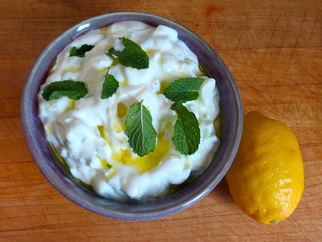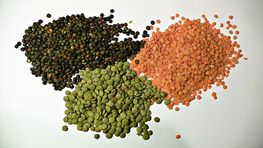
Food traveled along the the ancient trade routes of the Silk Road as easily as the rugs, silks, and spices it is better known for.
This recipe is for a Turkish version of the cooling cucumber and yogurt salad that is popular in many places along the old Silk Road. The Turks serve it as is as a meze or as a side dish. It is a perfect dish for the hot summer days most Americans are having now.
This recipe is for a Turkish version of the cooling cucumber and yogurt salad that is popular in many places along the old Silk Road. The Turks serve it as is as a meze or as a side dish. It is a perfect dish for the hot summer days most Americans are having now.

Cacik
Beat the yogurt, garlic, salt, and olive oil in a bowl until the mixture is very smooth. Fold in cucumber pieces and chopped mint leaves until these additions are evenly spread throughout. Transfer to serving dish and chill thoroughly. Serve garnished with mint leaves.
Serves 4
Common variations in Turkey
—Shauna
Cacik recipe by Shauna Roberts. Cacik pictured prepared by David Malueg. Photos copyright 2012 Shauna Roberts.
- 2 cups Greek-style yogurt
- 2 cloves garlic, finely chopped
- dash of salt, if desired
- 1 teaspoon olive oil
- 1 large American or 2 Persian cucumbers, peeled and chopped (if using American cucumbers, remove seeds before chopping)
- 10 fresh mint leaves (or to taste), chopped
- a few fresh mint leaves, whole
Beat the yogurt, garlic, salt, and olive oil in a bowl until the mixture is very smooth. Fold in cucumber pieces and chopped mint leaves until these additions are evenly spread throughout. Transfer to serving dish and chill thoroughly. Serve garnished with mint leaves.
Serves 4
Common variations in Turkey
- Add a squeeze of lemon juice when mixing the cacik.
- Substitute dill for mint.
- For a runny salad, use American-style yogurt.
- Dilute the cacik with ice-cold water and serve as a soup.
- Slice or grate the cucumber instead.
- Use 1 tablespoon of dried mint instead of fresh mint.
- Drizzle top with olive oil before serving.
—Shauna
Cacik recipe by Shauna Roberts. Cacik pictured prepared by David Malueg. Photos copyright 2012 Shauna Roberts.

 RSS Feed
RSS Feed